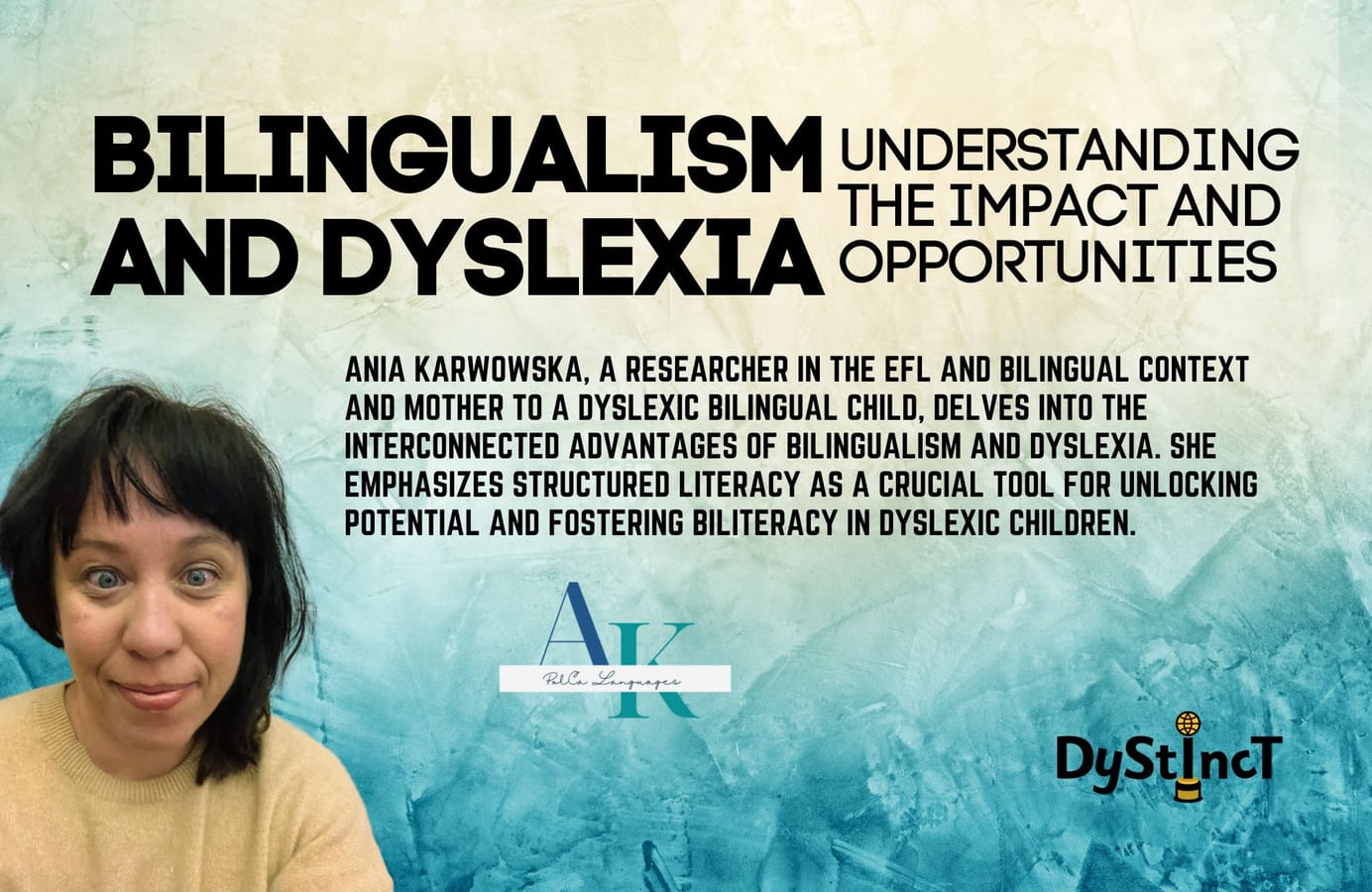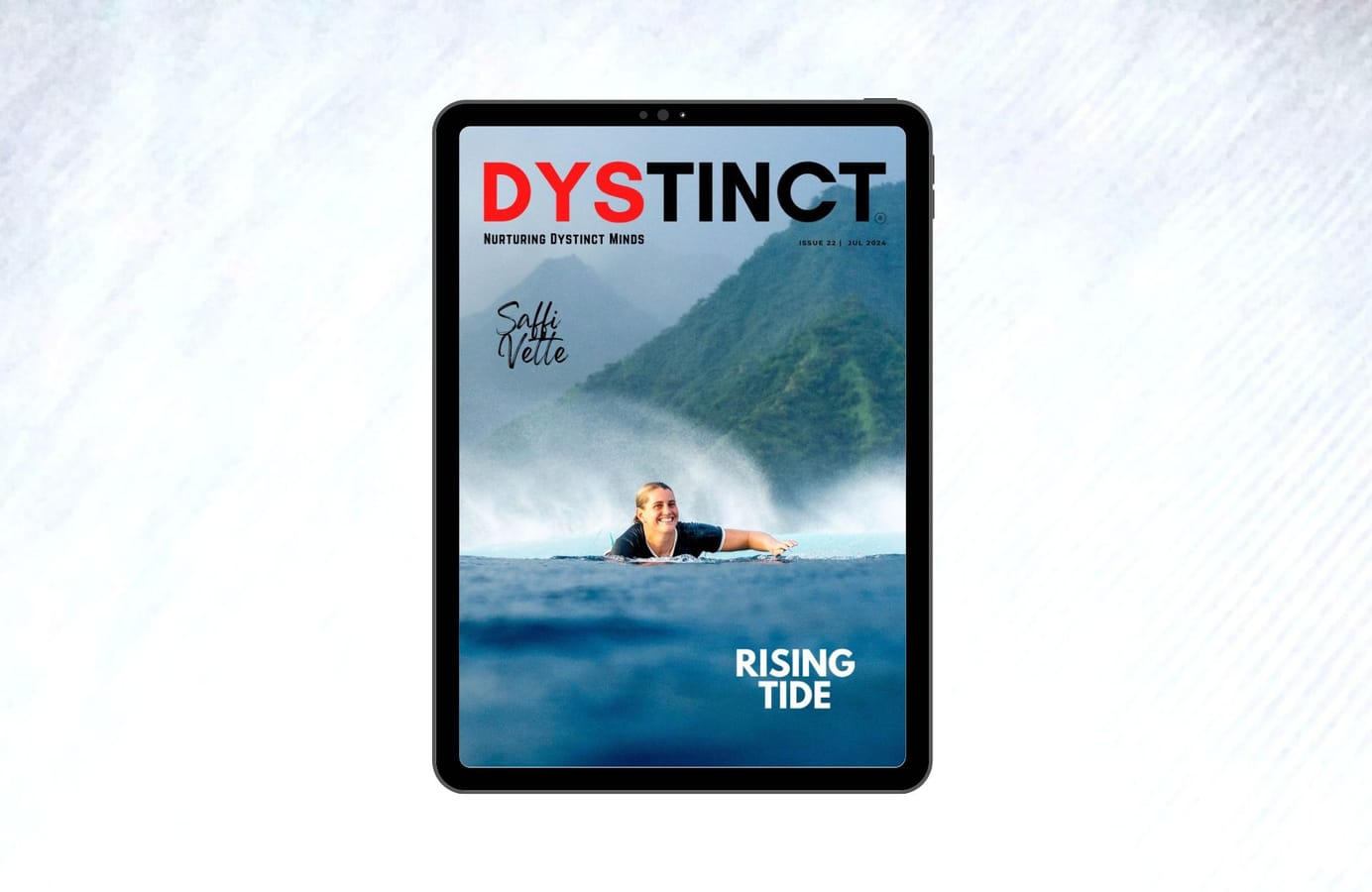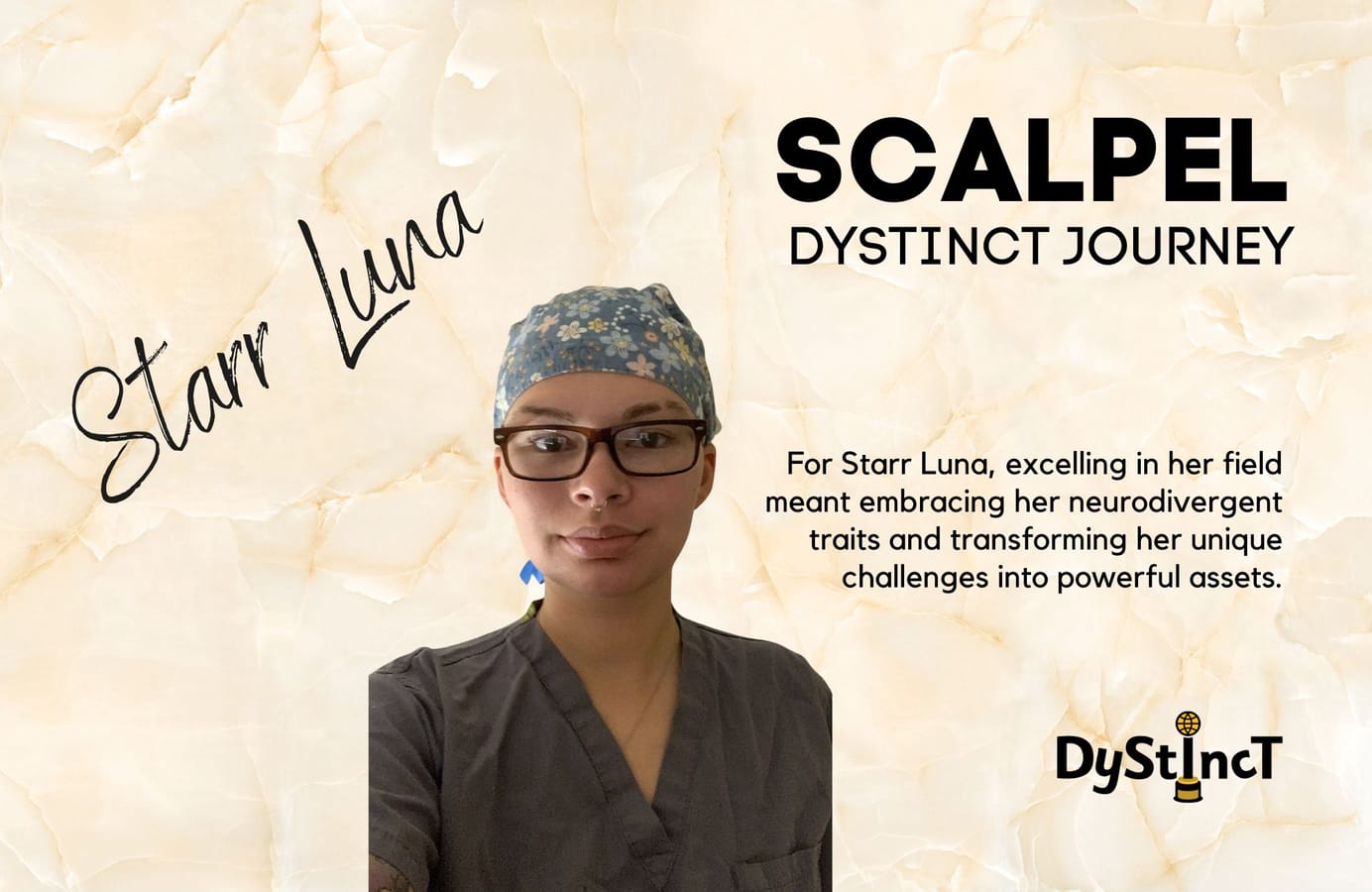
Issue 21: Bilingualism and Dyslexia: Understanding the Impact and Opportunities | Ania Karwowska
Ania Karwowska, a researcher in the EFL and bilingual context and mother to a dyslexic bilingual child, delves into the interconnected advantages of bilingualism and dyslexia. She emphasizes structured literacy as a crucial tool for unlocking potential and fostering biliteracy in dyslexic children.
Are you raising a bilingual dyslexic child?
You're navigating a unique adventure where challenges morph into opportunities, and every day is a step toward opening its incredible potential. Let's explore how bilingualism and dyslexia intertwine and how structured literacy can be your secret weapon.
Is your dyslexic child juggling two languages?
That's not just impressive; it's a cognitive boost, supercharging your child's brain with skills like problem-solving and decision-making. Imagine bilingualism not as a hurdle but as a set of superpowers. These powers include richer metalinguistic awareness, giving your child a unique edge.
Additionally, this dual-language practice strengthens executive functions, particularly in areas like attention management and cognitive flexibility, which are crucial for academic success. Bilingual children often exhibit advanced skills in recognizing patterns and making connections between concepts, a direct benefit of navigating two linguistic systems. Thus, bilingualism is a cognitive exercise and a comprehensive developmental advantage supporting broader learning and adaptation abilities.
Bi-literacy is often a labor of love.
Aiming for biliteracy, or the ability to read and write proficiently in two languages, is a challenging goal. This journey involves overcoming literacy hurdles in one language and applying these hard-won skills to another. Structured literacy instruction, so crucial for dyslexic learners, must be carefully adapted to fit the linguistic features of each language. This tailored approach should include sequential learning, explicit phonics instruction, and teaching methods, all within a bilingual framework. Integrating the study of morphology and etymology into the curriculum enriches learners' understanding of word structures and origins; we provide our children with deeper insights into both languages and further enhance their literacy skills within this bilingual framework.
A robust literacy foundation in one language acts as a springboard, facilitating a smoother and faster transition to biliteracy,
Establishing solid foundational skills in the first language significantly accelerates learning to read in the second language, as many phonological awareness and decoding strategies are transferable. This foundational strength provides a solid base for bilingual learners to grasp and apply similar literacy concepts in their second language more quickly. Consequently, a robust literacy foundation in one language acts as a springboard, facilitating a smoother and faster transition to biliteracy, making the acquisition of reading skills in the second language less daunting and more efficient.
Bilingual individuals engage in many cognitive tasks, managing multiple languages daily. This linguistic maneuvering boosts various cognitive and executive functions essential for planning, decision-making, and problem-solving.
The dynamics of bilingualism and dyslexia extend into linguistic processes. Bilingualism enriches metalinguistic awareness stemming from their experience with two languages and could positively influence phonological processing, a pivotal component of reading development yet a common hurdle for those with dyslexia. Additionally, each language's phonological and orthographic characteristics can uniquely impact the presentation of dyslexia, suggesting that these linguistic and cognitive processes are crucial in devising appropriate dyslexia interventions in bilingual contexts.
Striving for biliteracy, or proficiency in reading and writing in two languages, poses a commendable yet challenging goal, especially for dyslexic children. This pursuit necessitates overcoming phonological and literacy challenges in one language and transferring these skills to another. Supporting bi-literate dyslexic learners calls for a nuanced, evidence-based strategy that acknowledges the complexities of bilingualism and dyslexia.
Bilingualism enriches metalinguistic awareness stemming from their experience with two languages and could positively influence phonological processing, a pivotal component of reading development yet a common hurdle for those with dyslexia.
Fostering cross-linguistic skills and nurturing supportive reading environments are critical. Providing access to diverse reading materials and encouraging practices like reading aloud in both languages can significantly benefit bi-literate development. Collaborating with professionals specialized in dyslexia and bilingual education, including bilingual speech-language pathologists and dyslexia specialists, offers tailored support essential for advancing language development and literacy.
Recognizing the intricate relationship between bilingualism and dyslexia is pivotal for effective dyslexia identification and intervention among bilingual individuals. Traditional dyslexia assessments and interventions might not fully account for bilinguals' unique experiences, underscoring the necessity for culturally and linguistically responsive approaches. By harnessing bilingualism's cognitive and linguistic advantages, such as enhanced executive functions and metalinguistic awareness, we can better support bilingual dyslexic individuals' literacy development.
The conjunction of bilingualism and dyslexia unveils a complex yet fascinating domain. With a deeper comprehension of the mental and linguistic interplay, educators and clinicians are better equipped to empower bilingual individuals with dyslexia, leverage their bilingualism as an asset, and ensure equitable access to literacy success.
Bilingualism enriches metalinguistic awareness stemming from their experience with two languages and could positively influence phonological processing, a pivotal component of reading development yet a common hurdle for those with dyslexia.
This post is for paying subscribers only
SubscribeAlready have an account? Log in


